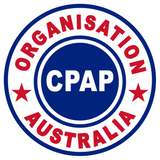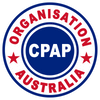Philips Recall Update

A quick update on the state of play on the Philips CPAP machine recall that has been running since 2021. Most of the information comes from the US, although the recall is worldwide, including Australia.
If you are new to the issue, Philips, a major global CPAP manufacturer, has been required to recall many of its most poplar model machines. Not necessarily exclusively, the problem resides with the material, the ‘foam,’ used within the air pump inside the machine. This is a non-accessible part of the machine, not to be confused with the normal air filter, which is a user-serviceable component. The purpose of this internal foam is noise attenuation, i.e., to make the operation of the CPAP machine quieter than it would be if the air pump were empty.
The latest Philips news, which surfaced at the beginning of this year, is that the FDA conducted a recent examination of the company, which raises concerns. Overall, the situation is still not ideal. Due to the disruption in production, there is still a global shortage of CPAP devices.
At what stage is the recall at right now?
In June 2021, the recall began. In September 2021, the FDA gave its approval to Philips' recall procedure and new foam. 5.2 million units have been identified as needing repair or replacement at this time. For this recall, Philips produced 1.5 million units or repair kits. There is still a significant disconnect between what is needed and what has been produced.
Even still, only 800,000 of the 1.5 million production units had been given to users as of now. Some DreamStation 2 replacements have arrived, but no one has reported receiving a repaired machine so far.
Philips stated that they would conduct the recall within 12 months of receiving the authorisation, which was granted in September 2021. As a result, September 2022 is the planned completion date. However, given that they claimed in December that they had completed 800,000, this will take around 18 months, putting us past September 2022 and into early 2023. It is possible that they have put in place procedures to speed up the recall and meet the September 2022 deadline.
Should you still be using your DreamStation 1 until you get your unit repaired or replaced?
This has been a confusing directive, and you should get specific advice from a medical specialist. There has been different advice from a variety of sources.
When Philips announced the recall, they advised users to stop using these devices immediately and consult a doctor. Because the FDA's guidance differed significantly, Philip's most recent recommendation has been to see your doctor and determine whether the risks of continuing to use the DreamStation outweigh the risk of not using your CPAP therapy. They believe there is a greater risk in telling people to stop using their CPAP than there is in them using their DreamStation CPAP.
A third party has been engaged to monitor the recalled equipment, and so far, no abnormally elevated levels of volatile organic compounds (VOCs) have been discovered. They are not evaluating any CPAPs that have been exposed to ozone, which is a critical distinction.
For those unfamiliar with the full history of the recall, it is theorized that the use of ozone cleaners may have caused the noise attenuating the foam's structure to deteriorate. Ozone cleaners are CPAP cleaning devices that use either 'ozone' or 'activated oxygen' as a cleaning process. They claim to be chemical-free, and they claim to convert two-atom oxygen into a three-atom molecule that kills mould, germs, and viruses. If you are using one of these with your Philips DreamStation, you should stop using it until you receive confirmation that it is safe to use with your specific CPAP machine.
Is the new DreamStation 1 repair kit and DreamStation 2 CPAP foam safe?
People are also concerned about the safety of the new foam. The new foam is silicone-based and has complied with all VOC regulations. A recent FDA examination at one of Philips' production facilities revealed that one of the units tested positive for VOCs, causing concern among CPAP users.
According to unverified online sources, this plant was also producing other devices, including a ventilator that had not yet been approved. As a result, the failed unit is not yet released. Nothing on the FDA's current list of approved products failed inspection. This includes both DreamStation 1 and DreamStation 2 repair kits.
How is Philips prioritizing recall for higher-risk people?
Philips has been given the task of developing a more prioritised strategy for people who are at higher risk. People who are on a bilevel machine or who have COPD or other comorbidities are more vulnerable to the negative effects of quitting their CPAP therapy.
According to the questionnaires people have been receiving, they are looking to target patients with other concerns in addition to sleep apnea, such as if you use a BiPAP or anything similar. Their strategy appears to be to prioritize patients who are at higher risk or have major concerns about ending CPAP or BiPAP therapy.
You should check Philips' website for the most recent updates on this subject since added information emerges on a regular basis.


Leave a comment